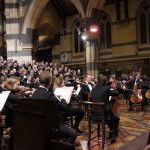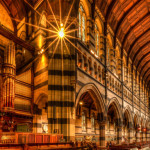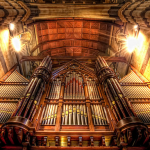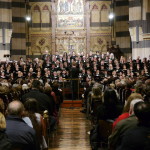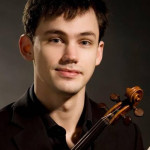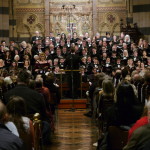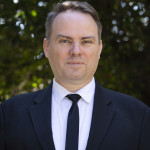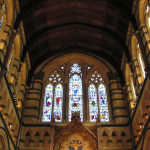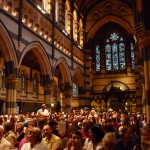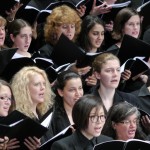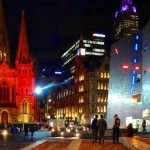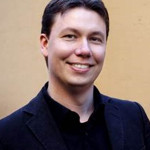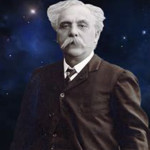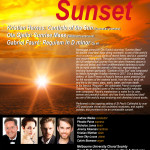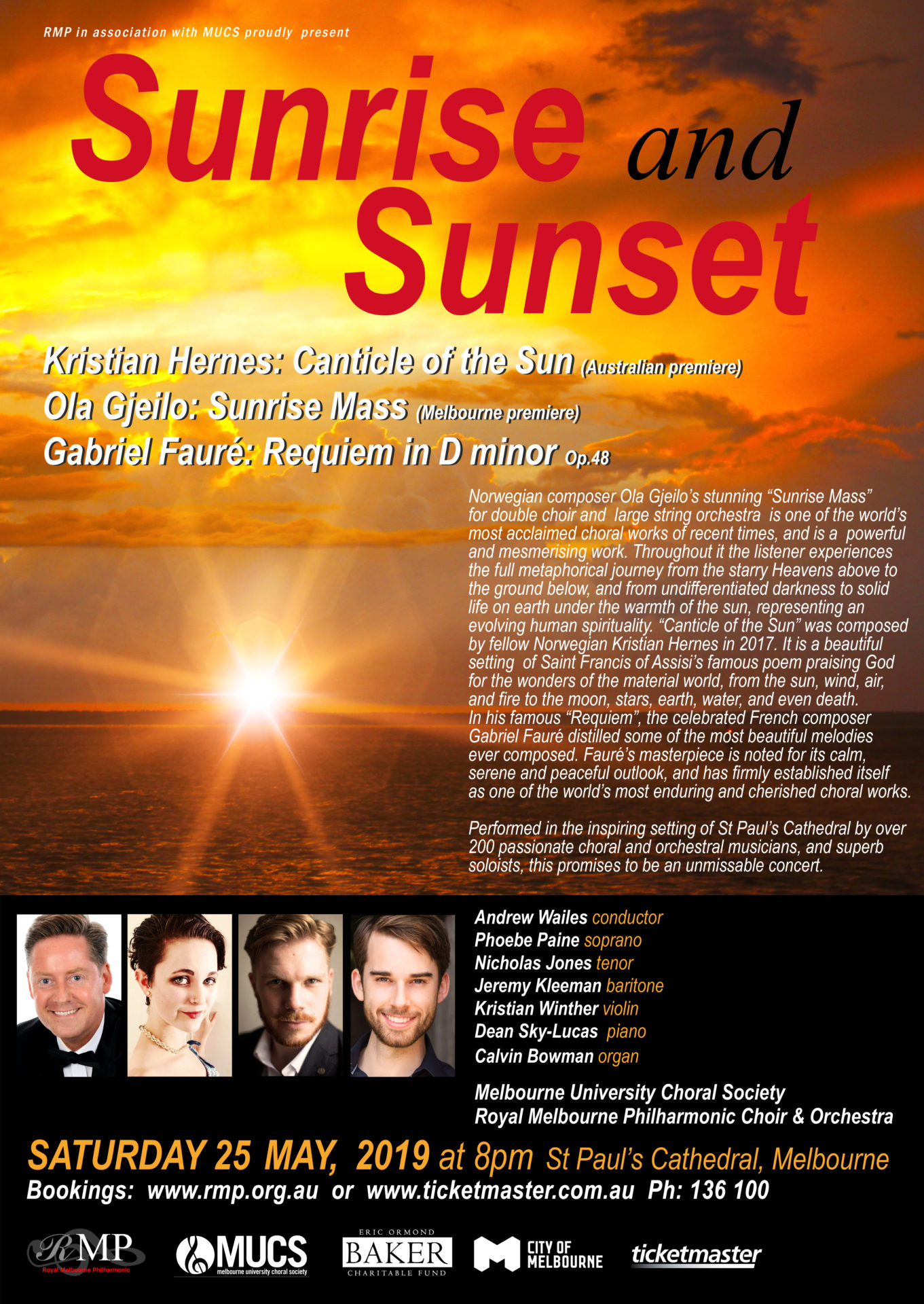 SUNRISE AND SUNSET
SUNRISE AND SUNSET
Ola Gjelo Sunrise Mass
Kristian Hernes Canticle of the sun
Gabriel Fauré Requiem in D minor, Op. 48
Saturday 25 May, 2019 at 8pm
St Paul’s Cathedral
Andrew Wailes, conductor
Phoebe Paine, soprano
Nicholas Jones, tenor
Jeremy Kleeman, baritone
Kristian Winther, violin
Dean Sky-Lucas, piano
Calvin Bowman, organ
Royal Melbourne Philharmonic Choir
Melbourne University Choral Society
Royal Melbourne Philharmonic Orchestra & soloists
The Norwegian composer Ola Gjeilo was born in Oslo, Norway, in 1978. Following studies at the Norwegian Academy of Music in Oslo, the Royal College of Music in London, and the Juilliard School of Music in New York, (where he won the 2005 Juilliard Composers’ Orchestral Work Competition), he relocated to the USA to study film composition in Los Angeles. As a composer he exploded on the choral scene in 2007. His recent and rapid meteoric rise as a composer corresponded with the creation of his masterwork for double SATB chorus and large string orchestra, the Sunrise Mass. The Mass was commissioned in 2007 by Tore Erik Mohn for performance by two combined choruses, Majorstua Kammerkor and Kammerkoret Nova, and was premiered on November 2, 2008. Since then, the Sunrise Mass has been presented in concerts across the world to great acclaim.
This spiritually-uplifting extended work, neither expressly sacred nor secular, uses ancient texts even though the titles of the movements are in English: I. The Spheres (Kyrie); II. Sunrise (Gloria); III. The City (Credo); IV. Identity & The Ground (Sanctus). The four movements develop from a sense of the cosmos to an affirmation of the earth, from the echo of The Spheres in the first movement to the final reassuring themes of Identity & The Ground.
Gjeilo’s compositional style and fingerprint is distinct and is the result of an amalgamation of cinematic and classical influences with sacred and secular elements. His Sunrise Mass was clearly composed with one eye on the big screen, influences by today’s hottest motion picture composers, and one eye towards the past in the direction of Brahms, Britten, Duruflé, and Bach. In Gjeilo’s Sunrise Mass the listener experiences the full metaphorical journey from the starry Heaven to Earth, from undifferentiated darkness to solid, warm life, evolving spiritually as a human.
Commissioned by KORiOSLO (Conductor: Tom Wiklund), and financed by the Norwegian Composers Fund in 2017, “Canticle of the Sun” was composed by Kristian Hernes in 2017. Kristian Hernes has a Masters degree (classical piano) from the Norwegian Academy of Music. He has a broad area of activity as a performer; as solo pianist, accompanist for many of the nation’s leading artists, studio musician for CD recordings / television / motion pictures and as the organist in Torshov / Lilleborg church, Oslo. He has won a number of prizes for his compositions from the Norwegian Choir Association and the Norwegian Association for Sacred Music. His works, especially his compositions for choir, have been performed in a number of countries in throughout Europe and North America, in Australia and South Africa.
In his famous seven-section Requiem, the French composer Gabriel Fauré distilled some of the most beautiful melodies ever composed. The creation was almost certainly a musical tribute to his father, who died in 1885, three years before work on the Requiem began.
As with much of Western classical music, the Requiem owes its roots to Christian faith. Traditionally, at its heart, it is a prayerful lament for the dead. Fauré’s own setting of the Requiem was altogether different, though, because here was a composer who, unlike many of his contemporaries, had no clear religious beliefs. By contrast, he was very much a doubter, described by his own son as ‘a sceptic’. In place of the sombre nature of many requiems that had gone before, Fauré’s is noted for its calm, serene and peaceful outlook. Faure’s Requiem provides musical solace to the listener in a work that focuses not on the guilt of sin or fear of damnation, but on the supposedly restful and fear-free nature of death.
Of all seven sections, the Pie Jesu, Agnus Dei and In Paradisum emerge as the most glorious, filled with rich, soulful melodies. The work garnered the praise of many other composers – not least Camille Saint-Saëns, who thought it “divine”. It was performed at Fauré’s own funeral in 1924, and has since become one of the world’s most enduring choral works across the globe.

